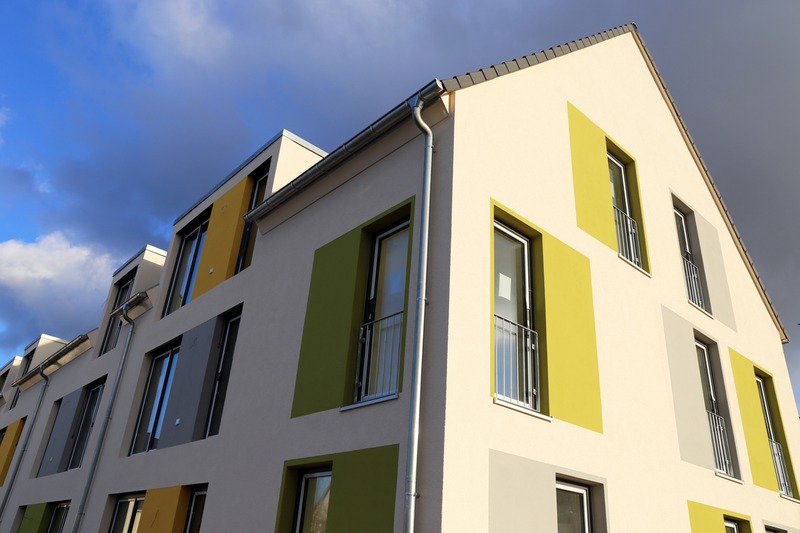How Can I Fix Peeling Paint on My Home’s Exterior
Peeling paint on your home’s exterior can affect its curb appeal and market value. It can even create problems for the structure by letting moisture and pests damage the walls. Fixing peeling paint is important for maintaining your home’s appearance and health. There are simple yet effective ways to solve this issue without needing extensive knowledge or professional skills.
Steps to Fix Peeling Paint on Your Home’s Exterior
Step 1 – Identify and Evaluate the Damage
Before beginning any repairs, correctly identifying the paint problems can save time and effort. Walk around the exterior of your home, noting areas with visible paint peeling or bubbling. Take pictures or notes as needed to ensure you won’t miss spots later on. Checking carefully helps you fully prepare and gather all necessary equipment.
Step 2 – Gather Essential Tools and Materials
Before starting, ensure you have the proper utensils handy. Gathering required supplies early helps to streamline the process without interruption. You’ll likely already have some materials at home, while others can be easily purchased at local hardware stores.
-
Paint scrapers and putty knives
-
Safety goggles and dust masks
-
Sandpaper (medium and fine grit)
-
Pressure washer or garden hose
-
Exterior-grade primer and paint
-
Paintbrushes, rollers, and trays
-
Ladder or scaffolding (as needed)
-
Drop cloths for protecting surfaces
Step 3 – Prepare Your Working Space Properly
Start by placing drop cloths or plastic sheets on the ground to catch paint flakes and debris, making cleanup easier. Ensure all movable items, like furniture and pots, are taken far away from the walls. If you have plants or shrubs nearby, consider using accommodation covers to protect them from paint splashes or debris.
Step 4 – Scrape Away Peeling and Loose Paint
Use a sharp paint scraper carefully against areas where the paint appears loose or peeling. Scrape gently, removing only the paint that comes off effortlessly without forcing the scraper. Work methodically until all affected areas appear neat and free from loose chips or flakes.
Step 5 – Smooth the Surface by Sanding
Once all peeled paint is removed, sanding helps create a smooth surface to paint over. Begin by sanding with medium-grit sandpaper, then move onto fine-grit paper for extra smoothness. Thoroughly finish sanding each exposed area to avoid uneven painting later.
Step 6 – Clean Surfaces and Repair Damages
After sanding, there could be dust and small debris left behind that need cleaning prior to painting. Wash down the walls using a garden hose or pressure washer carefully. Look carefully to identify any imperfections or cracks on the surface. If found, repair them now using appropriate exterior-grade putty or caulk, following the instructions provided on the label.
Step 7 – Apply Exterior Primer
Primer serves as the base coat to help exterior paints adhere better to surfaces. Carefully choosing an exterior-grade primer appropriate for your material type ensures good results. Start from the top of the walls downward and apply an even layer to all scraped areas, as well as any repaired spots. Allow it sufficient drying time as indicated on its packaging before moving forward.
Step 8 – Paint Your Home’s Exterior Walls
Picking high-quality exterior paint that matches existing colors guarantees uniformity and increased durability. Begin painting with brushwork around edges and corners first before moving onto painting large surfaces using rollers. By painting in sections from top to bottom, you achieve a professional-looking finish easily. Apply at least two coats allowing enough time for thorough drying between applications according to manufacturer recommendations.
Step 9 – Clean Up and Dispose of Paint Waste Properly
After successfully painting all affected areas, cleaning tools properly is necessary to prolong their lifespan. Wash brushes, rollers, and trays thoroughly using warm water and soap. Let’s not forget the disposal of paint waste and debris according to local laws. Always close paint containers tightly to use for future touch-ups if needed.
Step 10 – Inspect and Monitor Your Progress Regularly
Regularly monitoring painted surfaces helps you stay ahead of potential paint issues in the future. Inspect your home’s exterior every few months, especially after harsh weather conditions. Quickly repairing minor areas ensures the paint remains intact and maintains its overall appearance.
Important Things to Consider Before Painting
Proper Timing and Weather Conditions
Painting during inappropriate weather can lead to poor adhesion or shorten the lifespan of your finish. For the highest chances of successful painting, aim for clear and dry days. Avoid painting exterior surfaces during high humidity, rain, excessive wind, or extreme temperature variations.
Selecting Premium Quality Exterior Paints
Choosing high-quality paints increases durability and reduces risks of further peelings or bubbles on walls. Premium exterior paints often offer greater protection against harsh weather and prolonged UV exposure. Investing in good-quality paint helps save both your budget and effort involved in frequent repainting.
Considering Professional Assistance
For overwhelming projects or when uncertainty arises, professional assistance is immensely beneficial. Professionals come prepared with the right gear, extensive experience, and a deep understanding of common paint-related challenges. Employing such experts can save time, prevent project delays, and ensure the desired outcomes.
This is particularly true when dealing with commercial properties, where hiring experts in exterior painting for businesses becomes essential. They offer the proficiency required to address the distinct needs of business edifices. Often, they are well-versed in recommending specific coatings that provide a durable finish capable of withstanding high-traffic wear and tear.
Specialized Industrial and Commercial Painting Solutions
For industrial buildings, specialized paints and application processes might be necessary. Such structures usually have varying maintenance requirements compared with typical homes. Hiring specialists who offer exterior painting for industrial buildings ensures the building gets correct coverage, appropriate protective coatings, and longer-lasting solutions.
Safety Measures During Exterior Painting Projects
-
Always use safety gear like masks, gloves, goggles, and proper footwear.
-
Secure ladders safely during use—never overreach or lean too far.
-
Never leave tools unattended, particularly when children or pets may gain access.
-
Avoid painting near electrical power sources without proper safety precautions.
-
Maintain caution while working on high areas and secure scaffolding firmly.
Engaging experienced Battle Creek exterior painting contractors can be especially helpful for larger tasks. These skilled professionals offer tailored solutions suited to regional climate and material preferences, providing the additional support needed to handle any issues that may arise during the project.
Limitations of DIY Painting Projects
-
Larger or more complex projects could require expertise and specialized equipment.
-
DIY jobs might take longer than expected, depending upon individual skills.
-
Professionals have vast knowledge that ensures accuracy in painted surfaces.
-
Frequent mistakes can increase the costs involved in fixing errors later.
-
Effectively preventing mistakes often involves careful preparation beforehand.
Closing Remarks
Fixing peeling paint significantly enhances your home’s appearance and protects against harsh environmental factors. Carefully following these simple steps ensures a professional-looking outcome without complications or delays. If doubts arise during repair processes, consider consulting experienced professionals certified in exterior painting services. Proper maintenance through regular inspections preserves painted surfaces in good condition over extended periods.
Categories

Recent Posts
- The Importance of Maintaining Rental Properties for Long-Term Success
- 3D Industrial Scanning versus Traditional Measurement: A Comparison
- Techniques to Increase the Range of Radio Communications in Industrial Settings
- How to Improve Fuel Efficiency in Your Vehicle
- Managing Tooth Sensitivity: Expert Tips and Treatments
Theme by The WP Club . Proudly powered by WordPress

